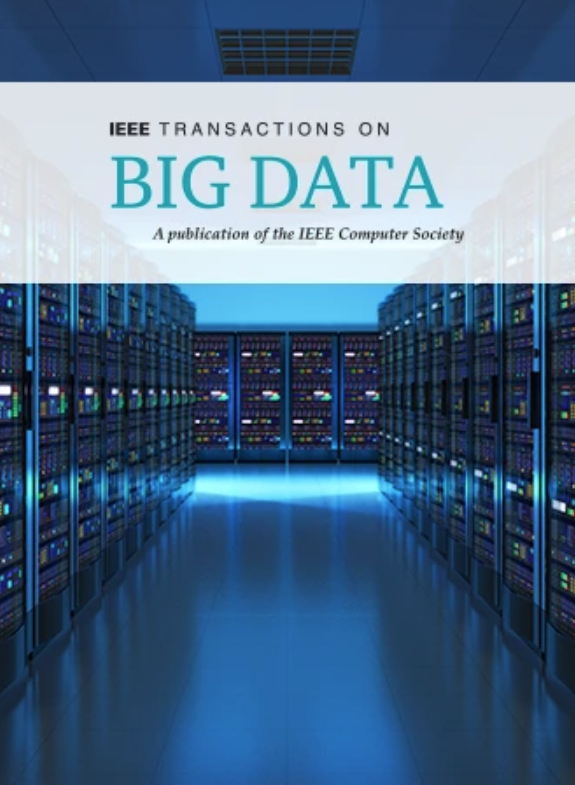面向图神经网络的链接窃取攻击的大型语言模型
IF 5.7
3区 计算机科学
Q1 COMPUTER SCIENCE, INFORMATION SYSTEMS
引用次数: 0
摘要
图数据包含丰富的节点特征和独特的边缘信息,已被应用于各种领域,如引文网络或推荐系统。图神经网络(gnn)专门用于处理此类数据,并在许多应用中显示出令人印象深刻的性能。然而,gnn可能包含敏感信息,容易受到隐私攻击。例如,链路窃取是一种攻击者推断两个节点是否链接的攻击类型。以往的链路窃取攻击主要依赖于目标GNN模型的后验概率,忽略了节点特征的重要性。此外,不同数据集节点类的变化导致后验概率的不同维度。对这些不同数据维度的处理对使用单一模型有效地对不同数据集进行链接窃取攻击提出了挑战。为了解决这些挑战,我们引入了大型语言模型(llm)来对gnn执行链路窃取攻击。llm可以有效地集成文本特征,并表现出强大的泛化能力,使攻击能够处理跨各种数据集的不同数据维度。我们设计了两个不同的LLM提示,以有效地结合文本特征和图节点的后验概率。通过这些设计的提示符,我们对LLM进行了微调,以适应链路窃取攻击任务。此外,我们使用多个数据集对LLM进行微调,使LLM能够同时从不同的数据集学习特征。实验结果表明,无论在白盒还是黑盒场景下,我们的方法都能显著提高现有链路窃取攻击任务的性能。我们的方法可以使用单一模型跨不同数据集执行链接窃取攻击,使链接窃取攻击更适用于现实场景。本文章由计算机程序翻译,如有差异,请以英文原文为准。
Large Language Models for Link Stealing Attacks Against Graph Neural Networks
Graph data contains rich node features and unique edge information, which have been applied across various domains, such as citation networks or recommendation systems. Graph Neural Networks (GNNs) are specialized for handling such data and have shown impressive performance in many applications. However, GNNs may contain of sensitive information and susceptible to privacy attacks. For example, link stealing is a type of attack in which attackers infer whether two nodes are linked or not. Previous link stealing attacks primarily relied on posterior probabilities from the target GNN model, neglecting the significance of node features. Additionally, variations in node classes across different datasets lead to different dimensions of posterior probabilities. The handling of these varying data dimensions posed a challenge in using a single model to effectively conduct link stealing attacks on different datasets. To address these challenges, we introduce Large Language Models (LLMs) to perform link stealing attacks on GNNs. LLMs can effectively integrate textual features and exhibit strong generalizability, enabling attacks to handle diverse data dimensions across various datasets. We design two distinct LLM prompts to effectively combine textual features and posterior probabilities of graph nodes. Through these designed prompts, we fine-tune the LLM to adapt to the link stealing attack task. Furthermore, we fine-tune the LLM using multiple datasets and enable the LLM to learn features from different datasets simultaneously. Experimental results show that our approach significantly enhances the performance of existing link stealing attack tasks in both white-box and black-box scenarios. Our method can execute link stealing attacks across different datasets using only a single model, making link stealing attacks more applicable to real-world scenarios.
求助全文
通过发布文献求助,成功后即可免费获取论文全文。
去求助
来源期刊

IEEE Transactions on Big Data
Multiple-
CiteScore
11.80
自引率
2.80%
发文量
114
期刊介绍:
The IEEE Transactions on Big Data publishes peer-reviewed articles focusing on big data. These articles present innovative research ideas and application results across disciplines, including novel theories, algorithms, and applications. Research areas cover a wide range, such as big data analytics, visualization, curation, management, semantics, infrastructure, standards, performance analysis, intelligence extraction, scientific discovery, security, privacy, and legal issues specific to big data. The journal also prioritizes applications of big data in fields generating massive datasets.
 求助内容:
求助内容: 应助结果提醒方式:
应助结果提醒方式:


